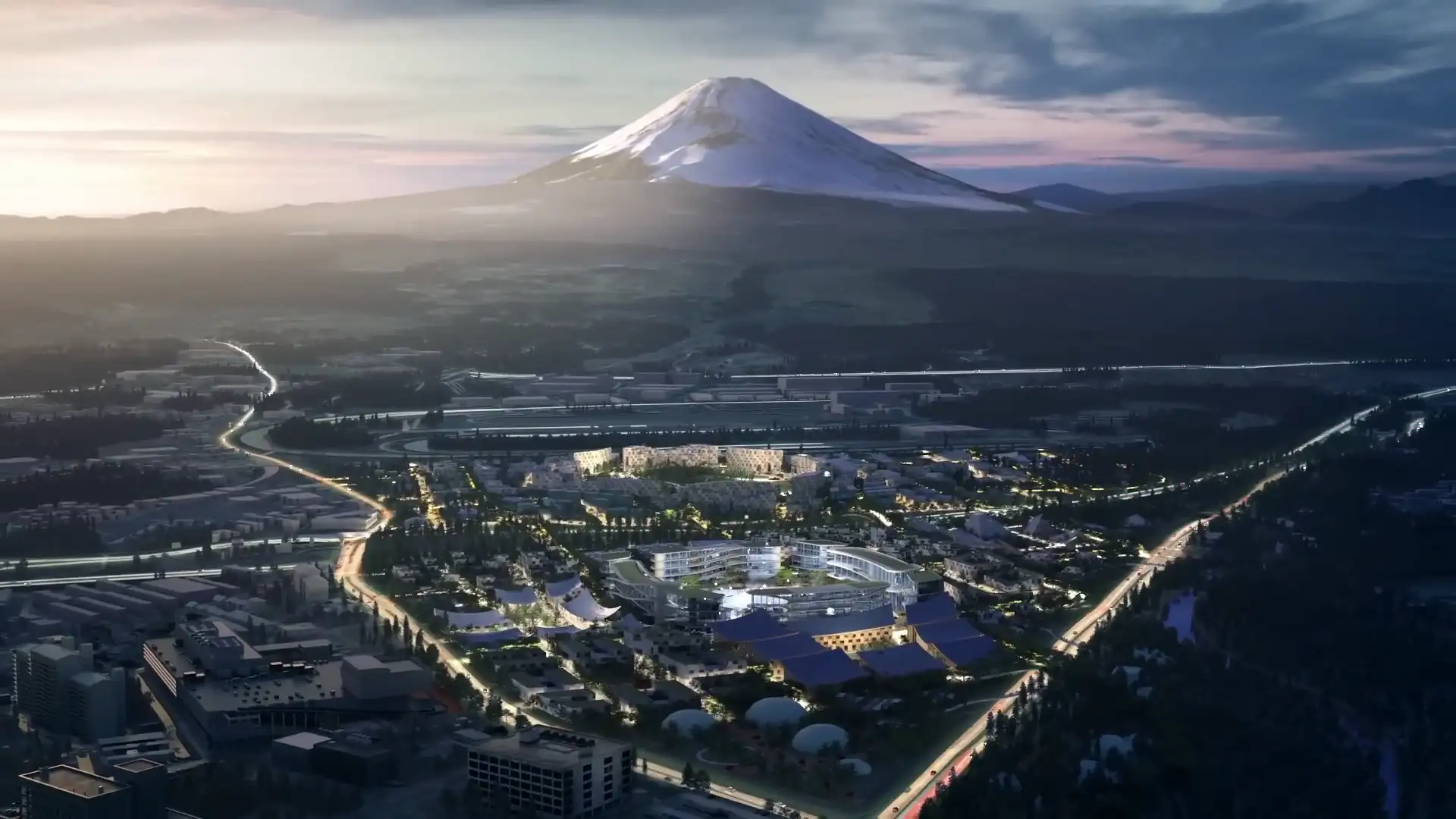Toyota has unveiled ambitious plans for the “Woven City.” This prototype “city” of the future is now a reality. It spans a 708,000 square meter (approximately 175-acre) site at the base of Mt. Fuji in Japan. This fully connected ecosystem runs on hydrogen fuel cells. It will serve as a dynamic “living laboratory.”
Building the Future: Phase 1 Complete, Launch Nears
Woven City has made significant progress since its groundbreaking in February 2021. Phase 1 construction was completed in October 2024. Preparations for the official launch are now underway. This initial phase is set to officially launch in Fall 2025 or shortly thereafter.
The project has already earned Japan’s first LEED for Communities Platinum certification. This is the highest rank for environmentally conscious and human-centric design. Renovation of a former Toyota plant facility is also underway. It will become a manufacturing hub for Woven City. Site preparation for Phase 2 has commenced as well. Insights from Phase 1 will refine plans for future phases.
A Living Laboratory: Who Lives There and What They Test
This “living laboratory” will include full-time residents and researchers. They will test and develop cutting-edge technologies. These include autonomy, robotics, personal mobility, and smart homes. All testing occurs in a real-world environment.
Initially, around 100 residents will move in during Fall 2025. These will primarily be Toyota and Woven by Toyota (WbyT) staff and their families. The community will then gradually expand. External inventors and their families will join. Phase 1 plans to accommodate about 360 residents. The total population, including Phase 2 and subsequent phases, aims to reach approximately 2,000 people.
Woven City focuses on three distinct types of streets:
- Faster vehicles: Dedicated lanes for autonomous, zero-emission vehicles, like Toyota’s e-Palette shuttles.
- Mixed-use: Pathways for slower personal mobility devices and pedestrians.
- Pedestrian-only: Parks and promenades for walking and social interaction.
Key Technologies Under Test:
- Autonomous Driving: The city will serve as a testbed for self-driving cars and delivery robots.
- Robotics: Robots will assist with daily tasks, including deliveries and waste collection, often utilizing underground passageways.
- Smart Homes: AI systems will monitor residents’ health and assist with daily chores. They also manage lighting and temperature preferences.
- Personal Mobility: Innovations in smaller, individual transportation solutions are also tested.
- AI and Data Management: The city’s digital operating system connects people, buildings, and vehicles through data and sensors. This allows for real-time testing of connected AI technology.
Partnerships and a Broader Vision
Toyota is not working alone. It has ongoing discussions with partners like ENEOS Corporation (energy), Nippon Telegraph and Telephone Corporation (NTT – connectivity), and Rinnai Corporation (appliances). External startups, entrepreneurs, universities, and research institutions will also be invited. An accelerator program will begin in summer 2025.
Toyota views Woven City as a key initiative. It helps them transform from an automaker into a broader “mobility company.” This aims to enhance the movement of people, goods, information, and energy for everyone’s well-being. Woven City demonstrates Toyota’s long-term commitment. It actively shapes the future of mobility and urban living.


